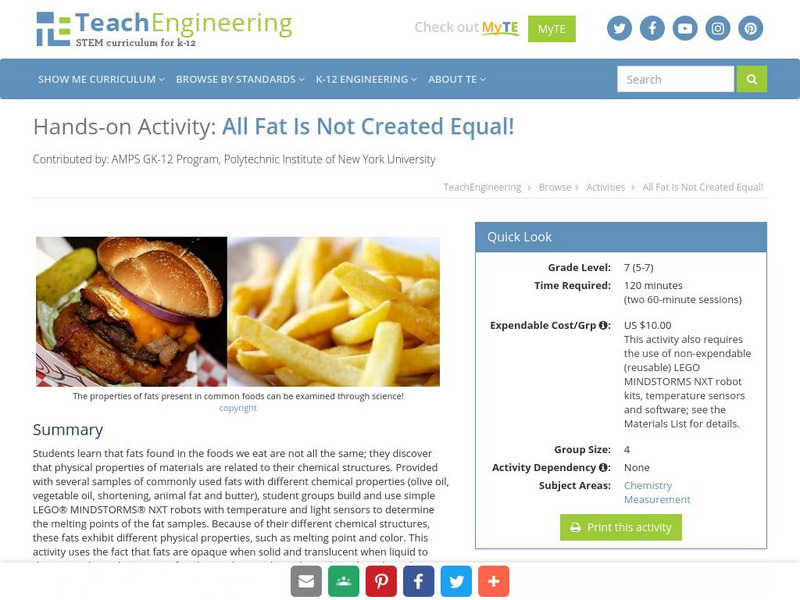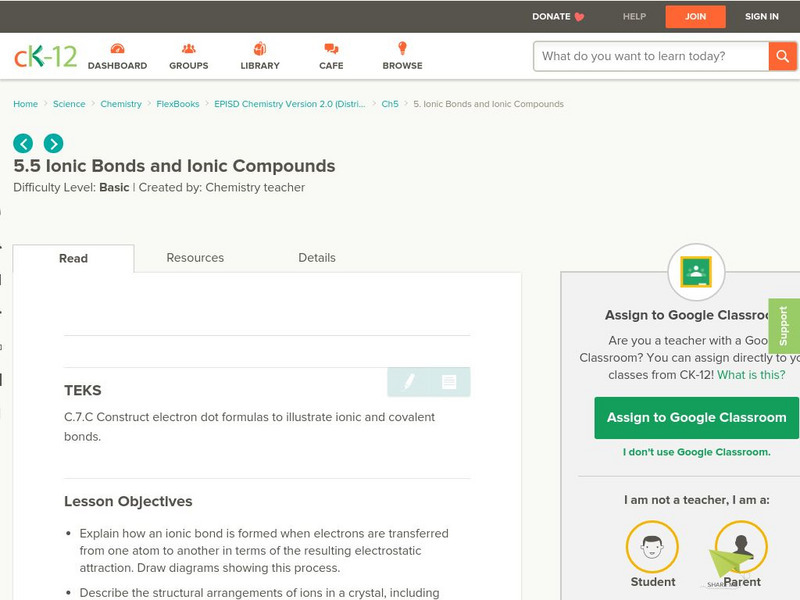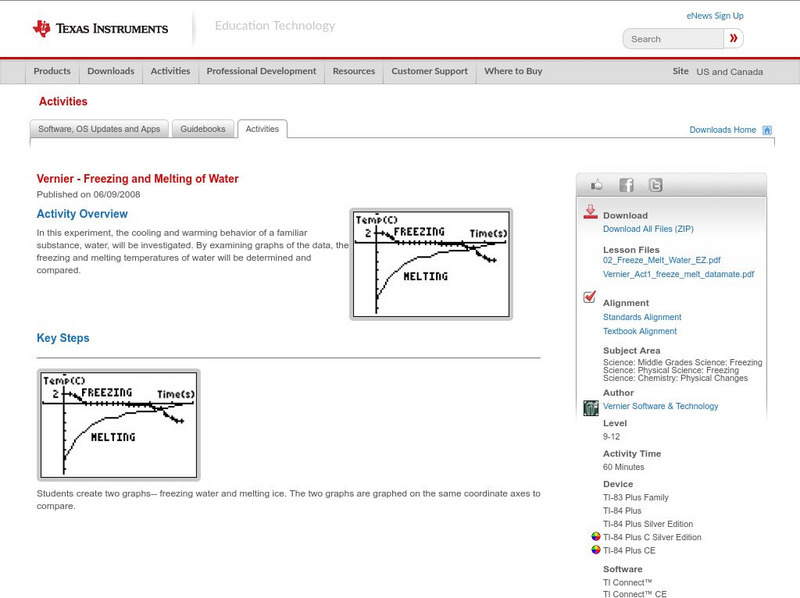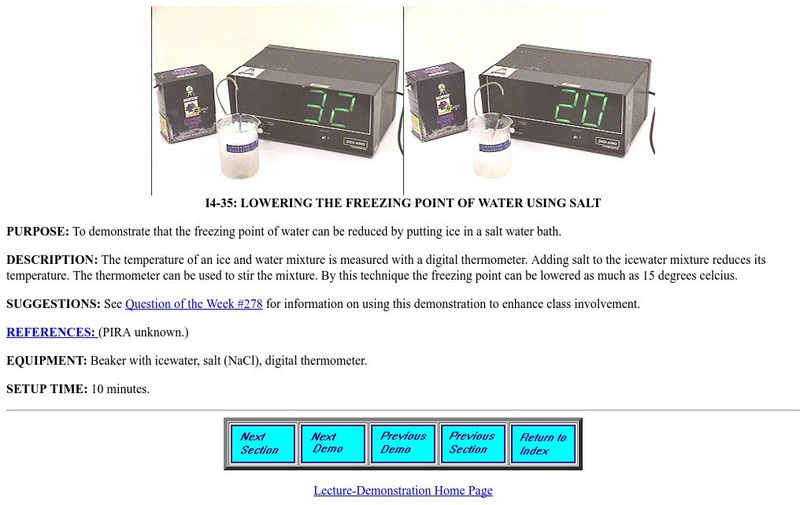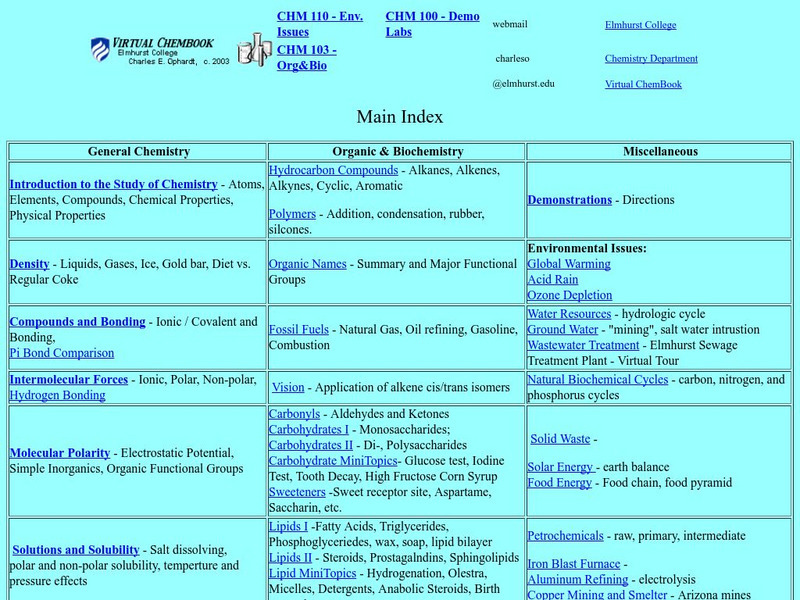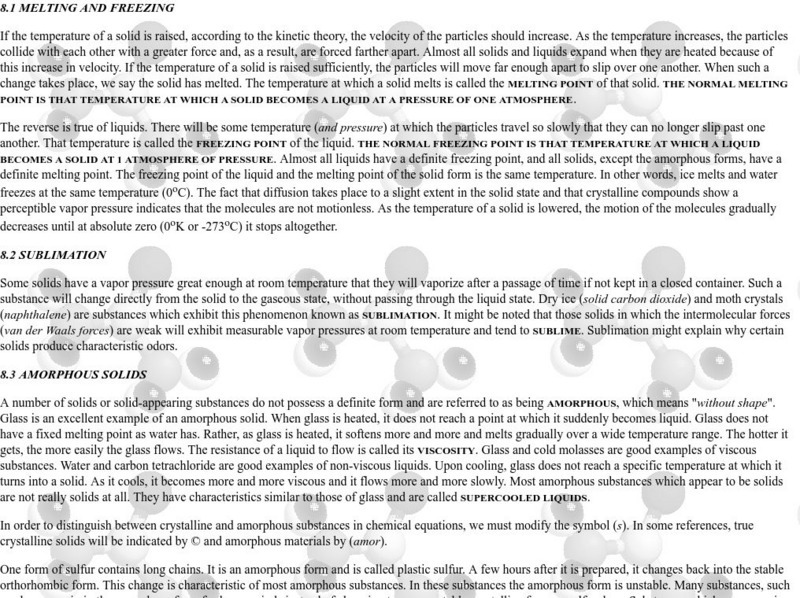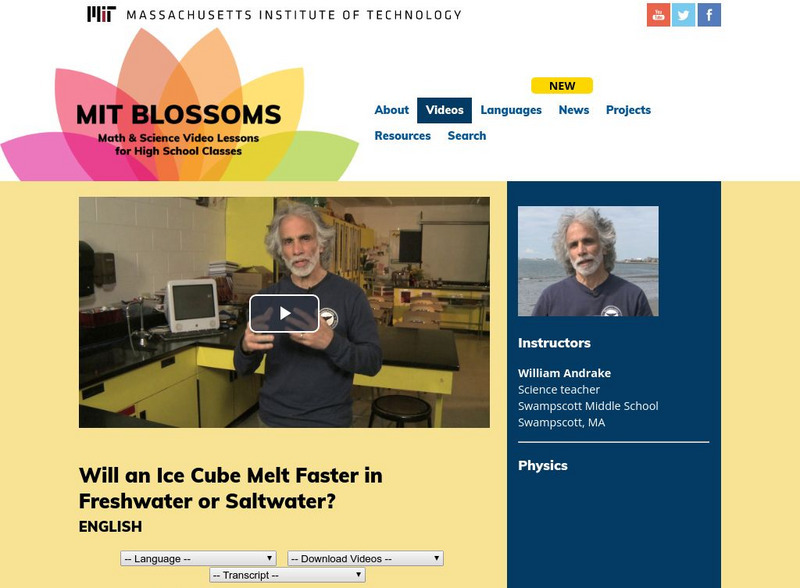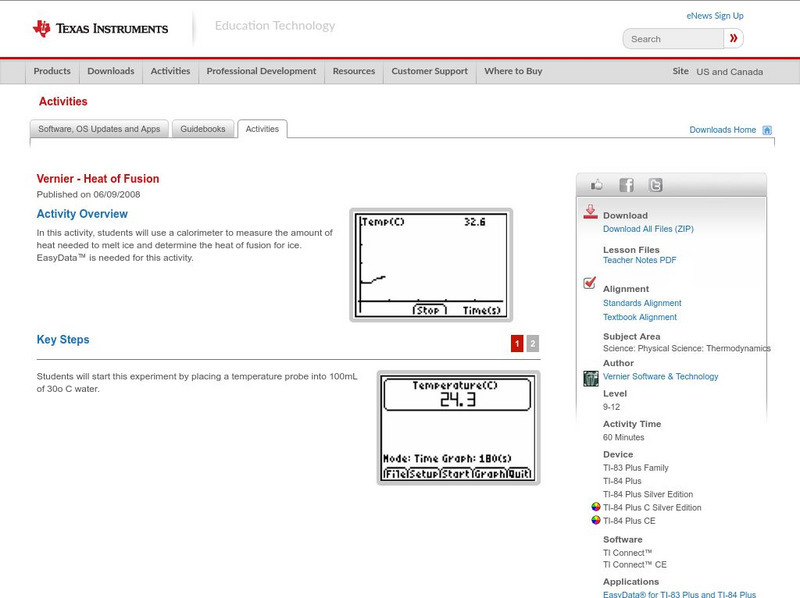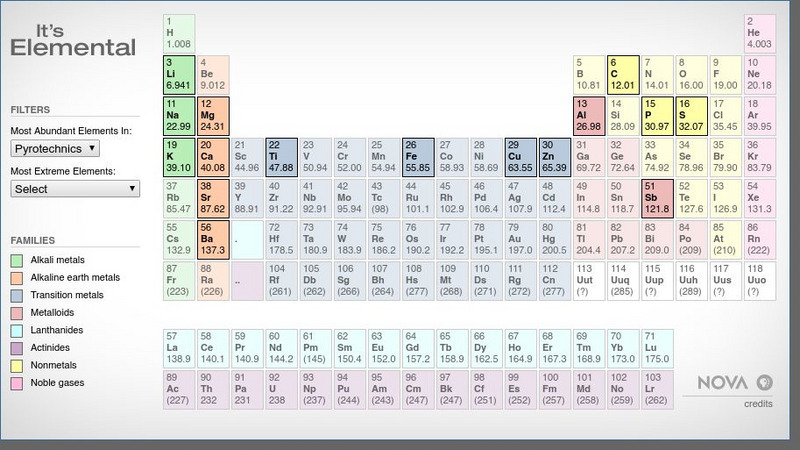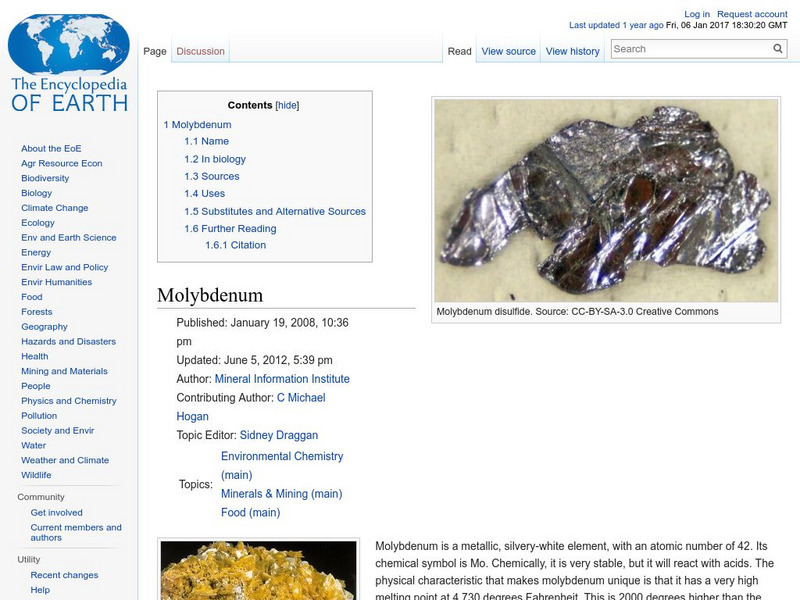Sophia Learning
Sophia: Boiling, Freezing, Melting Point: Lesson 4
This lesson will introduce the phase changes that occur at the boiling, freezing, and melting points. It is 4 of 4 in the series titled "Boiling, Freezing, Melting Point."
Sophia Learning
Sophia: Boiling, Freezing, Melting Point: Lesson 1
This lesson will introduce the phase changes that occur at the boiling, freezing, and melting points. It is 1 of 4 in the series titled "Boiling, Freezing, Melting Point."
Science Struck
Science Struck: The Melting Point of Gold
Explains what the melting point of pure gold is and the melting points for different gold alloys. Also presents various facts about gold and its properties.
Science Struck
Science Struck: Melting Point of Copper
Read about the properties of copper, what its melting point is, and the role this plays in producing copper carbonate and copper alloys.
CK-12 Foundation
Ck 12: Physical Science: Melting
[Free Registration/Login may be required to access all resource tools.] What happens to matter when it melts and the definition of melting point.
Science Struck
Science Struck: Aluminum Melting Point
Read about the unique properties of aluminum, what its melting and boiling points are, its uses, and some facts about it.
TeachEngineering
Teach Engineering: All Fat Is Not Created Equally!
Students learn that fats found in the foods we eat are not all the same; they discover that physical properties of materials are related to their chemical structures. Provided with several samples of commonly used fats with different...
CK-12 Foundation
Ck 12: Ionic Bonds and Ionic Compounds
[Free Registration/Login may be required to access all resource tools.] In the following online tutorial students will learn to explain how an ionic bond is formed when electrons are transferred from one atom to another in terms of the...
Texas Instruments
Texas Instruments: Freezing and Melting of Water
Freezing temperature, the temperature at which a substance turns from liquid to solid, and melting temperature, the temperature at which a substance turns from a solid to a liquid, are characteristic physical properties. In this...
American Chemical Society
Middle School Chemistry: Changing State Melting
Explore the phase change that occurs when ice is melting.
University of Maryland
Lowering the Freezing Point of Water Using Salt
A page from the University of Maryland Physics Lecture Demonstration Facility. Provides directions for a teacher demonstration of the effect of an ionic solute upon the freezing point of water. Shows apparatus and set-up; provides...
E-learning for Kids
E Learning for Kids: Science: Kaap De Goede Hoop: Why Do Changes in State Take Place?
Zander is on a camping trip. Join him, and help him learn about boiling and melting points.
CK-12 Foundation
Ck 12: Chemistry Simulation: Salty Roads
[Free Registration/Login Required] Explore how solutes can keep roads clear of ice in the winter by learning how different types and concentrations of a solute affect the freezing point of a solution.
Other
Elmhurst College: Virtual Chembook: What Are Physical Properties and Changes?
Brief descriptions of physical properties, physical changes, and the process of sublimation. The three states of matter, melting point, and boiling point are described. There is one link on the page, which leads to an explanation of...
Other
Third Millenium Online: Melting and Freezing
The concepts of melting point and freezing point are explained on this site.
Massachusetts Institute of Technology
Mit: Blossoms: Will an Ice Cube Melt Faster in Freshwater or Saltwater?
Engage learners in the study of the ocean and saltwater with these activities. Students will see that saltwater has different physical properties than freshwater - mainly density. This lesson can serve as a springboard into other...
Texas Instruments
Texas Instruments: How Low Can You Go?
In this activity, Students can use an EasyTemp temperature probe to determine the normal melting temperature of ice. They will then study how the addition of salt to the melting ice affects its melting temperature. They will finally...
Texas Instruments
Texas Instruments: Heat of Fusion
In this activity, students can use a calorimeter to measure the amount of heat needed to melt ice and determine the heat of fusion for ice. EasyData is needed for this activity.
CK-12 Foundation
Ck 12: Physical Science: Freezing
[Free Registration/Login may be required to access all resource tools.] Explains what happens to matter when it freezes and the definition of freezing point.
Ducksters
Ducksters: Kids Science: Melting and Boiling
Kid's learn about the science of melting and boiling. How matter changes state from solids to liquids to gases.
PBS
Pbs Learning Media: Melting and Boiling Simulation
Observe the motion and temperature of water molecules in this simulation as heat is applied to a beaker containing an ice cube.
PBS
Pbs: Nova: Interactive: It's Elemental
Periodic table of elements, color-coded by family type. Elements are highlighted based on prevalence in human body, in sun, etc., or by density, boiling point, or melting point.
Other
Chemical elements.com/scandium
A site containing a good deal of elemental information. Information on each element includes atomic number, atomic mass, melting point, boiling point, density, isotopes and more.
Encyclopedia of Earth
Encyclopedia of Earth: Molybdenum
Information about the metallic element, Molybdenum, atomic number 42. It is unique in having an extremely high melting point. Covers its discovery, its biological importance, its physical and atomic properties, how abundant it is on the...
Other popular searches
- Boiling Point Melting Point
- Freezing Melting Point
- Melting Point Lab
- Melting Point Pure
- Boiling Point, Melting Point
- Ice Melting Point
- Freezing and Melting Points
- The Melting Point
- Melting Point Pure Mix






